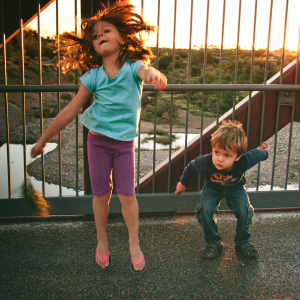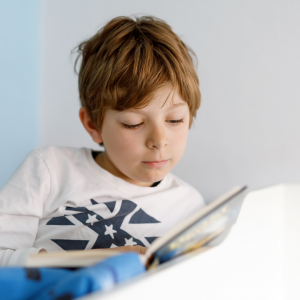
By Lillian Henricks, Psy.D., Mackintosh Academy School Counselor
The degree to which we can be compassionate toward self and others undoubtedly connects to the degree to which we can be calm. In flight, fight or freeze mode we cannot attend to our needs and feelings or those of others. This goes for both us and our children. Let’s look at some ways that we can practice, model and teach self-calming tools to our children.
One way is to partner breathing with our imagination. Imagine smelling a rose to practice slowly breathing in through the nose. Then imagine blowing bubbles to practice slowly breathing out through the mouth. This can be a fun game to play with your children. Make sure to breathe in and out several times.
 What about jumping on a trampoline, swinging, bike riding or any other kind of rhythmic movement like dancing or running? We live near Jackass Hill and when one of my children and I are at an impasse we walk up the hill, and back, and up again until we have gained some ground. Sometimes it is hard to gauge who is struggling most with emotional regulation!
What about jumping on a trampoline, swinging, bike riding or any other kind of rhythmic movement like dancing or running? We live near Jackass Hill and when one of my children and I are at an impasse we walk up the hill, and back, and up again until we have gained some ground. Sometimes it is hard to gauge who is struggling most with emotional regulation!
Finding ways for both you and your child to take breaks is crucial. Optimally these breaks would be built in, but I have never mastered or even approximated this in our home. Let’s say an hour or more after lunch is designated both down time and quiet time. No interaction, no screens, and ideally everyone can go to a separate space. This time is dedicated to things like napping, reading, journalling, playing with dolls, building with lego or blocks, making puzzles, prayer or listening to music or an audiobook. I say no screens because the fact is that screens are not truly rejuvenating. This time and space can allow for creativity and much needed reflection. It can be difficult to pull this off with little ones, and I cannot claim to have done it, but I do know families whose children have become accustomed to this routine and know that they cannot come out until the clock says x. This makes me think of another family who generally sends the children up to their rooms quite early to read or play quietly before bed. This might give parents some time to connect and come down from the day before engaging in the demands of the bedtime routine. This need not be daily or even frequent, but something that you can keep in mind as an option.
 I’ve heard twice recently that it takes an average of 66 days to form a new habit, and that is when the action is practiced throughout the day. Let’s be patient with ourselves and our children as we try to adapt these and other practices that can lead to calmness and better position us for compassion. Habit is the foundation for virtue, and as we have all heard, virtue is its own reward. What a gift to ourselves and to our children to strive towards greater equilibrium!
I’ve heard twice recently that it takes an average of 66 days to form a new habit, and that is when the action is practiced throughout the day. Let’s be patient with ourselves and our children as we try to adapt these and other practices that can lead to calmness and better position us for compassion. Habit is the foundation for virtue, and as we have all heard, virtue is its own reward. What a gift to ourselves and to our children to strive towards greater equilibrium!
